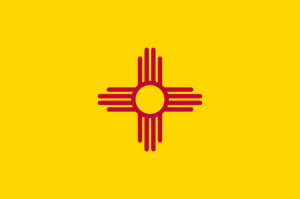New Mexico’s Model For Fomenting Latino Leadership
 Last week I found myself eating New Mexican-style pozole with new friends, getting to know artists from the corridor between El Paso and Las Cruces, and reconnecting with colleagues from across Texas, helping me to heal from my most recent 600-mile journey back to this historic region. For well over four centuries have mestizos inhabited these lands, now they are finally conducting Latino leadership trainings and discussions to prepare the next generation for the landscape of tomorrow. I was a member of the Texas contingent of panelists at the 2011 Leadership Summit presented by New Mexico State University’s Faculty/Staff Caucus.
Last week I found myself eating New Mexican-style pozole with new friends, getting to know artists from the corridor between El Paso and Las Cruces, and reconnecting with colleagues from across Texas, helping me to heal from my most recent 600-mile journey back to this historic region. For well over four centuries have mestizos inhabited these lands, now they are finally conducting Latino leadership trainings and discussions to prepare the next generation for the landscape of tomorrow. I was a member of the Texas contingent of panelists at the 2011 Leadership Summit presented by New Mexico State University’s Faculty/Staff Caucus.
My colleague, Dr. Cristobal Rodriguez, had invited me to his home at the base of the mountain to join the celebration that he and his wife were hosting in their home for visiting scholars from Texas. By the time I drove up the moonbeams were cascading upon this southern edge of the Rocky Mountains, illuminating our backyard conversations near the indigenous cacti, jalapeños and cilantro. Scholars from both ends of the Rio Grande, and every major community in between, ate and laughed and bonded the way Latinos do after midnight. A few hours later, we were dashing to campus to listen to NMSU President Barbara Couture welcome us to this historic event.
Three 20th century male Latinos, under 40 years of age, each from the borderlands, moving at high speed and armed with a Ph.D. What a rare breed to sight along Interstate-10, indeed.
Cristobal had asked me to share my insights on the convergence of education, politics and new media in relation to southern New Mexico and the rest of the borderlands. In all honesty, I had been zigzagging back and forth so many times between Central Texas and my patch of frontera during the weeks leading up to this event, that I had not prepared a formal presentation for my panel discussion. After the merriment and intellectual stimuli of the night before, I was calibrated for the summit and ready to engage. Fortunately I already knew one other panelist from El Paso, David Candelaria from Entravision, and I had recently met the moderator, Glen Gerny, a couple of weeks prior during the KRWG-TV taping of Fronteras: A Changing America.
Half of the conference opted to attend our panel discussion, and this audience was comprised of faculty members, current doctoral students, recent graduates, active community members, elected officials, representatives of government agencies and initiatives, journalists and even a former pupil. I endeavored to make an impression with my presentation on new media and the implications of how this new generation of young Latino leaders are responding to both the challenges and opportunities that our unique border region presents.
During both my panel presentation and the Q&A session with Juan Sepulveda, director of the White House Initiative on Educational Excellence for Hispanic Americans, I stressed the importance of innovation and entrepreneurship among this regional community of Latino scholars. As scholars, our mandate is to engage the community directly and not to get disconnected through elitism and a traditional tendency to promulgate a detached “ivory tower” disposition. Whether we remain in academia or we apply our educational training beyond its boundaries, we are a body of American Latinas and Latinos who are intended to inform policy through our research, advance the quality of life across our hemisphere through our teachings, and, above all, we are required to cultivate the next generation in and beyond the classroom through our hybrid cultural capabilities.
Perhaps it does take a special kind of eyes to appreciate how effective Latino experts can be advising policies and new regional initiatives, but myself and many of my colleagues and audience members are now convinced that we can apply our cultural strengths as well as new media technologies to augment local economies and expand horizons for 21st century residents of the borderlands.
I hope Texas institutions of higher education learn from the model that New Mexico State University has established. If the institution’s leadership has the vision to appreciate the ambient resources that predominantly Latino communities contain in abundance, they can configure opportunities to convene and coordinate an organized array of Latino scholars to apply their research directly in the community for the enhancement of the quality of life of all residents of the region.
[Image By newmexico.org]
